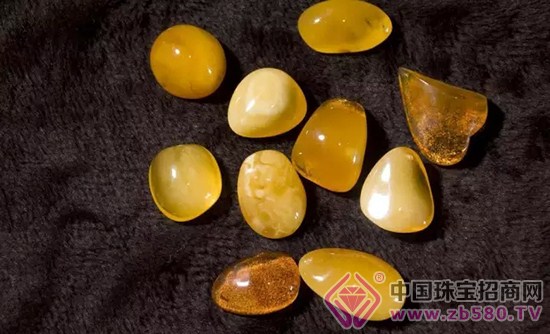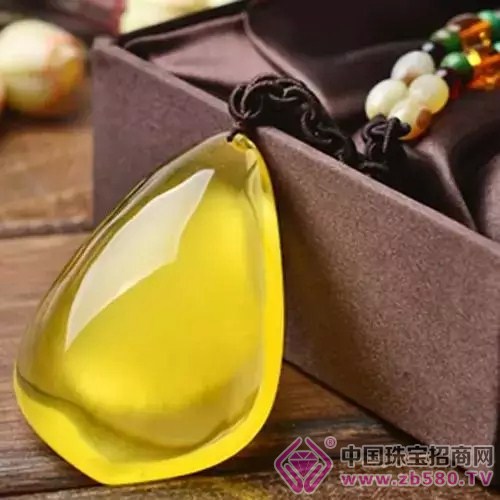With the burgeoning jewellery market in recent years, the prices of various jewellery and jade have risen, and the price of amber has also risen rapidly. Especially in 2014, the industry has the title of “Amber Yearâ€. In this year, the amber merchants, counters, and franchise stores in various major markets increased rapidly, and the amber varieties were greatly enriched. Major exhibitions, wholesale markets, and processing plants increased their area and increased production capacity, which eventually led to a big increase in amber prices. The big media talked about price, collection, and even the simple identification method. The jewelry laboratory is no exception. The original test benches filled with jade and white jade are often filled with amber samples sent by the merchants. A variety of amber samples were sent to the show, and the laboratory faced an unprecedented amber detection challenge. It was not only a challenge for amber detection, but also a challenge to the relevant inspectors' cognitive experience and care. Detecting risks cannot be ignored!
It is well known that amber is accumulated by the resin of plants such as pine or legumes, and is buried in the ground through geological effects. It has been gradually petrified after a long geological time. Amber has a large number of origins, mainly in the Baltic countries, the Caribbean countries and Myanmar, and also in Romania, the United States, Canada, India, Vietnam, New Zealand and other countries. China's amber is mainly produced in Fushun, Liaoning, Xixia, etc. Ground.
Natural amber is amorphous, transparent, translucent to opaque, with colors ranging from yellow-white to yellow to dark brown, and red, brown-red, green, and so on.
The industry often divides amber into several varieties based on the cause, color, and characteristics of amber. Such as:
According to the production of amber rough stone, it is divided into Haipo, Mine, and Lake Po;
According to the degree of amber transparency, it can be divided into amber (transparent), gold twisted honey, beeswax, bone peper, etc.
According to the color of amber, it can be divided into blood, cypress, gold, blue and green.
According to the characteristics of the amber internal inclusions, it is divided into water, flower, insect, and plant.
In the national standards, the following subspecies are defined according to the characteristics of transparency, color, and inclusion:
Beeswax: yellowish white to dark brownish yellow, translucent to opaque, waxy amber.
Jinpo: yellow to golden yellow transparent amber.
Blood: brown to red transparent amber, color red as blood is top grade.
Lanpo: The amber color of the amber is yellow, brownish yellow, yellowish green and brownish red. It has a unique blue color with different tones under natural light, which is more transparent under ultraviolet light.
Green Perg: Light green to green transparent amber, rare.
Insect: Amber containing insects or other organisms.
Plant: Amber containing plants (such as flowers, leaves, roots, stems, seeds, etc.).
First, the laboratory identification steps of amber
The laboratory's identification procedure for amber is generally divided into two major steps:
1. Determine the amber variety: first determine whether the sample component is amber, and distinguish amber from its imitation and natural similar products. Imitations such as artificial plastics, resins, etc., natural similar products such as glutinous resin, rosin, natural resin and the like. Samples are often analyzed using large instruments such as infrared spectrometers.
2, to determine whether the sample has been manually processed or artifacts: according to the standard needs to be marked when the manual processing has a film treatment (colored film), filling treatment, etc.; artifacts such as reconstituted amber, flat amber. It is often detected using conventional methods such as magnification inspection, optical characteristics, and ultraviolet fluorescence.
Second, amber detection risk
Usually, the laboratory will be able to obtain accurate test results by identifying the above two steps. However, regardless of manual processing, artifacts, imitations, and similar products, the exquisite workmanship of the large number of samples can be very similar to that of natural amber, and the combination of samples such as beads and sculptures is more complicated. Sexuality and concealment make the identification of amber far more difficult and risky than the description of the text.
Risk one
It is difficult to ensure accurate results with the naked eye or experience alone.

Imitations of plastics, artificial resins, etc., such as "Mali San", which is reminded of the spread of WeChat, the overall appearance is different, not to mention here. The distinction between amber and natural resins is a major challenge. Moreover, such commercial names in the place of origin + amber often appear in the market, and uninformed businesses and consumers are often purchased as amber.
Commercially known as yuba resin, "Colombian amber", "Borneo amber", "Sumatra amber", etc., and amber are natural resins, and the geological age, geological effect and degree of compaction are different, the former simply said It is younger. The similarity of the appearance is higher, and there are only a small number of peak positions on the infrared spectrum, which is easy to be confused. Most of the magnified checks cannot be distinguished, let alone the naked eye. Although some similar varieties have a sticky feeling compared with amber, but not all, and need to have experience to judge, still need to use infrared spectroscopy and other analytical instruments to confirm.
Risk two
Not careful and comprehensive, easy to miss the slight phenomenon
If the processed products such as filling and laminating treatment are manually processed, after the first step of detection, in the second step, it is still necessary to carefully observe under the magnifying glass, and some of them use different ultraviolet fluorescence to confirm. . It is very important to test the inspector's mirror effort (as shown in Figure 1) whether it is comprehensive, careful, and patient, whether it is aware of all possibilities, and thorough investigation.
Amber filling treatment:
Generally filled with artificial resin with polymerization function, the appearance gloss is almost the same as that of amber. Under the magnifying glass or microscope, the filler is mostly concave, accompanied by air bubbles remaining during the filling process. However, when ultraviolet fluorescence is observed, especially when the fluorescence phenomenon is magnified, the filling phenomenon is clearly seen (as shown in Figures 2 and 3).
Amber coating treatment:
Commonly covered with a colorless and colored film, the colorless film protects the surface of the amber, increasing the luster and increasing the weight of the amber. The colored film can be coated on a colorless or light color to give the sample the desired color. Common in such as blood, gold, blue and other colors, through the subtle phenomenon of surface peeling, spray marks, uneven coloration and other phenomena.
Recently, it was found that a layer of "light yellow-yellow film" was coated on the original light yellow amber, and a product of "chicken oil yellow" was comprehensively produced, and they were sent together with the sample coated with the colorless film. Because "yellow oil yellow" is a common color in amber, and the color of the film is similar to the color of the main body, only a small number of depressions have uneven color or local enrichment, which may cause leakage if not noticed. (As shown in Figure 4) When the laboratory's inspectors found out, they couldn't help but suck a cold breath and shouted: Risk!
Reconstituted amber:
Reconstituted amber is formed by pressing amber pieces or crumbs at a suitable temperature and pressure to form a larger piece of amber, also known as pressed amber. After the infrared spectrum is determined to be an amber component, it mainly depends on light transmission observation or microscopic observation, and has a "blood filament"-like structure, and distributes flake cracks along the "blood filament", has a granular structure, and can see particle boundaries and the like; It can be distinguished by combining the extinction zone under the polarizer, the white sapphire fluorescence under the ultraviolet fluorescent lamp, and the like.
Flatten amber:
Flat amber is a large piece of artificial gemstone whose main material is amber, other materials are amber, natural resin or imitation amber, which are artificially combined and give an overall impression. In the magnified inspection, the color, gloss and fluorescent characteristics of the different parts of the product are different, or the natural texture of the amber is discontinuous, and the cement and bubbles at the joint and the joint are visible. Under long-wave ultraviolet rays, the fluorescence of different components is inconsistent, and sometimes the weak blue fluorescence of the glue is seen. Even different parts can be determined by infrared spectroscopy to determine different components.
Risk three
Doping in the bead string, it is impossible to prevent
Just one thing happened during the writing of this article. A colleague took an amber bracelet and hoped that the lab would verify the results. The colleague joked that "you can see it yourself, all of them are jewels and jade quality inspectors." This bracelet (shown in Figure 6) has no problems in the naked eye including the mirror, no fluorescence, and it feels very confident in appearance. However, when the inspectors carefully examined each bead by infrared spectroscopy, they found that one of the 10 particles was Coba resin. The main inspection and auditors in the laboratory took turns to observe carefully, and all of them exclaimed, "It is too difficult for the naked eye to be separated!"

A piece of amber beads, no matter 18 or 21, or 108 or 216, no matter whether it is a string, a bead, a necklace or a bead, it is a sample. Only one certificate is issued, only one test result is produced. However, in the course of daily testing, it is occasionally found that there may be another kind of other substances in the whole strip, that is, natural may be doped with artificial amber, artificially reconstituted amber, natural resin similar products, artificial Resin imitation products, etc.
Other risks such as unknown or uncertain risks are more challenging and will not be repeated here.
In short, for the professional testing laboratory for jewellery and jade, the risk of amber testing challenges the eyesight, care and patience of each tester. It is inevitable to remind the institutions and personnel engaged in amber testing that it is necessary to understand and master the relevant amber market dynamics as much as possible, especially the processing, processing technology, variety and other aspects of information, but also need to collect relevant samples for research and testing analysis. Improve the awareness of amber and related varieties, reduce the greater risks that may be caused by various unknowns, and train and continuously improve related personnel.
In the detection, it is more necessary to conduct a comprehensive and systematic test. It should not be taken lightly, and it should not be considered as a professional or experienced. It ignores certain links or neglects subtle features and avoids unnecessary losses, not to mention the problems such as operating businesses in the market. The risks faced by non-professionals in the non-professional market are all kinds of risks such as panning or investing in collections.
Rayon Woven Fabric,Rayon Viscose Fabric,Rayon Satin Fabric,Rayon Slub Fabric
Shaoxing Shenwang Trading Co., Ltd , https://www.swcientex.com